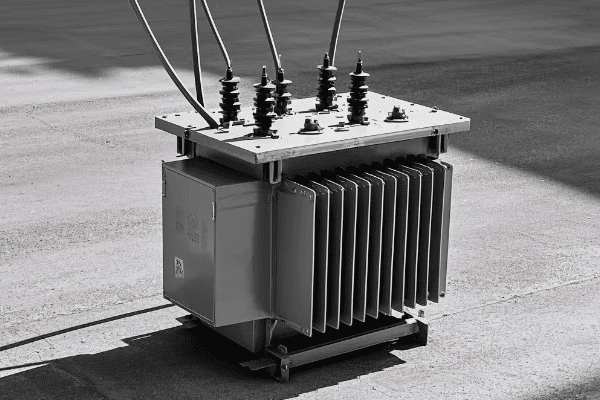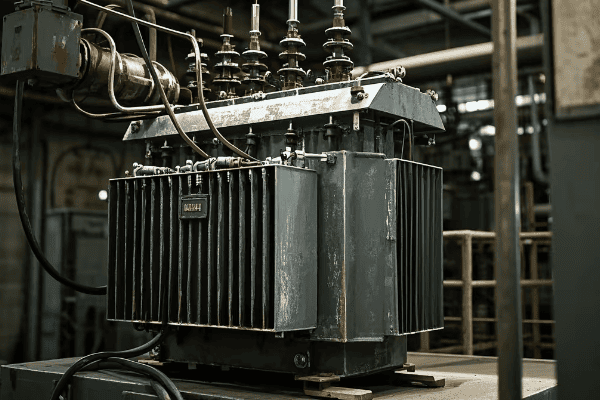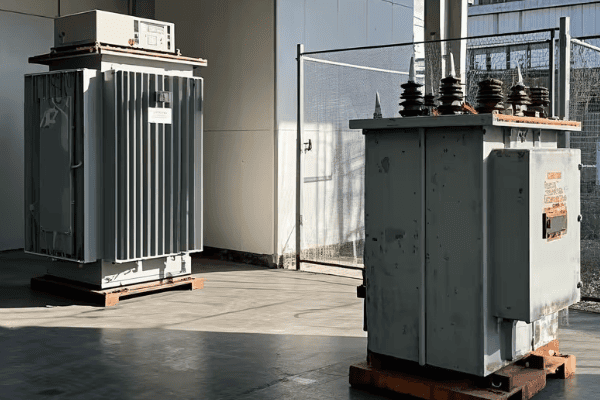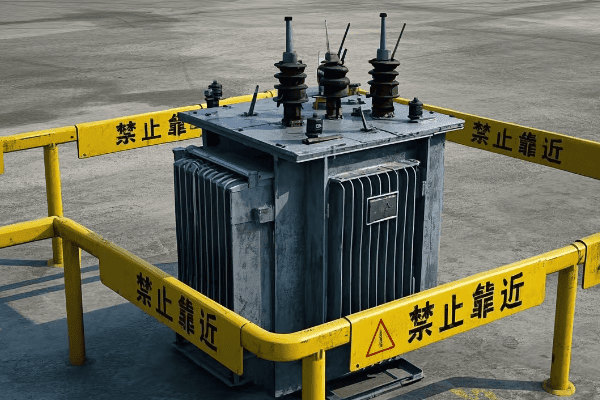What is a Ground Transformer and Why is it Critical for Electrical Safety?
Have you ever wondered how our electrical systems stay safe despite the massive amounts of power flowing through them? The answer often lies in a crucial yet often overlooked device: the ground transformer.
A ground transformer is a specialized electrical device used in power systems to enhance safety and reliability. It grounds the neutral point of the system, directing fault currents to the earth, thus preventing electric shocks and equipment damage. Ground transformers are critical in both industrial and residential settings, significantly reducing the risk of electrical accidents.

As an electrical engineer with over 15 years of experience in power system design, I’ve seen firsthand how ground transformers can make the difference between a safe, reliable electrical system and a potentially dangerous one. Let’s dive into the world of ground transformers and uncover why they’re so crucial for our electrical safety.
How Does a Ground Transformer Work?
Ever touched a metal appliance and felt a slight tingle? That’s exactly what ground transformers are designed to prevent. But how do they do it?
Ground transformers work by providing a low-impedance path for fault currents to flow to the earth. They create an artificial neutral point in delta-connected systems or reinforce the neutral in wye-connected systems. This ensures that in case of a fault, the current has a safe path to ground, triggering protective devices and minimizing the risk of electric shock.

Let’s break down the operation of a ground transformer:
-
Neutral Point Creation: In systems without a neutral (like delta-connected systems), the ground transformer creates an artificial neutral point.
-
Fault Current Path: When a fault occurs, the ground transformer provides a low-resistance path for the fault current to flow to the earth.
-
Voltage Stabilization: By grounding the neutral point, it helps stabilize the phase-to-ground voltages in the system.
-
Protection Triggering: The flow of fault current through the ground transformer can trigger protective devices, isolating the faulty part of the system.
I remember a project where we installed a ground transformer in an old industrial facility. Before the installation, they had frequent issues with equipment malfunctions and occasional minor shocks. After installing the ground transformer, these issues virtually disappeared, and the overall system stability improved significantly.
Key Takeaway: Ground transformers are not just safety devices; they’re crucial for the stable and reliable operation of electrical systems.
What Are the Different Types of Ground Transformers?
Did you know that ground transformers come in various types to suit different environments and applications? Let’s explore the main categories.
Ground transformers are primarily categorized into indoor and outdoor types based on their installation location. Indoor types include hanging and scaffolding ground transformers, while outdoor types are similar to dry-type transformers but with enhanced features for environmental resistance. The choice depends on factors like space constraints, environmental conditions, and system requirements.

Here’s a closer look at the main types of ground transformers:
-
Indoor Ground Transformers:
- Hanging Type: Suspended from ceilings or structures, ideal for spaces with limited floor area.
- Scaffolding Type: Mounted on scaffolds or platforms, suitable for indoor substations.
-
Outdoor Ground Transformers:
- Similar in shape to dry-type transformers.
- Enhanced features for pollution resistance, insulation, and partial discharge performance.
In a recent project for a coastal industrial plant, we opted for an outdoor ground transformer with special corrosion-resistant coatings. This choice was crucial given the harsh, salty environment, and it has performed exceptionally well over the past three years.
Here’s a comparison table of indoor and outdoor ground transformers:
| Feature | Indoor Ground Transformer | Outdoor Ground Transformer |
|---|---|---|
| Installation | Inside buildings | Outside, exposed to elements |
| Size | Generally smaller | Larger, more robust |
| Environmental Protection | Basic | Enhanced (weather-resistant) |
| Cost | Lower | Higher |
| Maintenance | Easier access | May require special equipment |
| Typical Applications | Office buildings, factories | Substations, industrial plants |
Key Takeaway: Choosing the right type of ground transformer is crucial for ensuring optimal performance and longevity in specific environmental conditions.
Why Are Ground Transformers Critical for Electrical Safety?
Have you ever wondered why electrical accidents aren’t more common, given the amount of power we use daily? Ground transformers play a key role in this safety equation.
Ground transformers are critical for electrical safety because they provide a controlled path for fault currents, prevent dangerous voltage rises on unintended paths, and enable the proper operation of protective devices. They significantly reduce the risk of electric shock, equipment damage, and electrical fires, making them indispensable in modern electrical systems.

Let’s explore the key safety aspects of ground transformers:
-
Fault Current Management: By providing a low-impedance path to ground, they prevent fault currents from flowing through unintended and potentially dangerous paths.
-
Voltage Stabilization: They help maintain stable phase-to-ground voltages, reducing the risk of insulation failures and equipment damage.
-
Protection System Enablement: Ground transformers allow protective devices like circuit breakers and relays to detect and respond to ground faults quickly.
-
Touch Voltage Reduction: They help limit the voltage that a person might contact during a fault condition, significantly reducing shock hazards.
I once consulted on a case where a small manufacturing plant experienced frequent equipment failures and had a near-miss incident with worker safety. After we installed a properly sized ground transformer, not only did their equipment reliability improve, but they also reported feeling much safer in their work environment.
Key Takeaway: Ground transformers are not just technical components; they’re fundamental safety devices that protect both equipment and human lives in electrical systems.
How to Choose the Right Ground Transformer for Your System?
Selecting the right ground transformer can seem daunting, but it’s crucial for system safety and efficiency. What factors should you consider?
Choosing the right ground transformer involves considering factors such as system voltage, fault current levels, installation environment, and regulatory requirements. Key parameters include the transformer’s kVA rating, impedance, insulation class, and environmental protection level. Proper selection ensures optimal performance, safety, and compliance with electrical codes.

Here’s a step-by-step guide to selecting the right ground transformer:
-
Determine System Requirements:
- Voltage level
- Expected fault current
- Grounding method (solidly grounded, resistance grounded, etc.)
-
Consider Environmental Factors:
- Indoor or outdoor installation
- Temperature range
- Humidity and pollution levels
-
Check Regulatory Compliance:
- Local electrical codes
- Industry-specific standards
-
Evaluate Technical Specifications:
- kVA rating
- Impedance
- Insulation class
- Cooling method
-
Assess Long-term Factors:
- Maintenance requirements
- Expected lifespan
- Future system expansion plans
In my career, I’ve seen many cases where an undersized or improperly specified ground transformer led to system instabilities and safety issues. Always consult with a qualified electrical engineer or the transformer manufacturer to ensure the right selection for your specific needs.
Key Takeaway: Proper selection of a ground transformer is not just about meeting current needs but also about ensuring long-term safety, efficiency, and scalability of your electrical system.
Conclusion
Ground transformers are unsung heroes in our electrical systems, silently working to ensure our safety and the reliability of our power supply. From creating artificial neutral points to managing fault currents, these devices play a crucial role in modern electrical infrastructure. As we continue to rely more heavily on electricity in our daily lives and industries, the importance of properly designed and installed ground transformers cannot be overstated. They are not just technical components but vital safeguards that protect both valuable equipment and, more importantly, human lives.
FAQs: Common Questions About Ground Transformers
- How often should ground transformers be maintained?
Ground transformers should typically be inspected and maintained annually, with more frequent checks in harsh environments. Maintenance includes visual inspections, insulation resistance tests, and oil analysis (for oil-filled types). However, always refer to the manufacturer’s guidelines for specific maintenance schedules.
- Can a system operate without a ground transformer?
While some systems can operate without a ground transformer, it’s generally not recommended due to safety concerns. Ungrounded systems are more prone to transient overvoltages and can be dangerous in fault conditions. Ground transformers provide a crucial safety function that’s hard to replicate with other devices.
- Do ground transformers consume a lot of energy?
Ground transformers typically have very low energy consumption. Their primary purpose is to provide a path for fault currents, not to transform power for regular use. The energy losses in a properly sized ground transformer are minimal compared to the safety benefits they provide.
- Can ground transformers be used in renewable energy systems?
Yes, ground transformers are often used in renewable energy systems, especially in large solar and wind farms. They play a crucial role in ensuring the safe and stable integration of these variable power sources into the grid, helping manage fault currents and maintaining system stability.
- What’s the difference between a ground transformer and a regular power transformer?
While both are transformers, their functions differ significantly. Regular power transformers are used to step voltage up or down for power transmission and distribution. Ground transformers, on the other hand, are specifically designed to provide a ground reference and manage fault currents. They typically don’t change voltage levels in normal operation.
Free CHBEB Transformer Catalog Download
Get the full range of CHBEB transformers in one catalog.
Includes oil-immersed, dry-type, pad-mounted, and custom solutions.
Quick Message
Request A free quote
We'd like to work with you
- +86 15558785111
- [email protected]
- +86 15558785111
What We Do
CHINA BEI ER BIAN (CHBEB) GROUP, with 218 million in registered capital, originated from Beijing Beierbian Transformer Group. Headquartered in Beijing for R&D, it operates major production bases in Nanjing and Yueqing, producing high-quality products.
Latest Product
address
BeiJing
No 3,RongJing East Road,BeiJing Economic Technological Development Area,BeiJing,China
JiangSu
No 7️Xiangfeng Road,Jiangning,NanJing,JiangSu,China
WenZhou
No.211, Wei 16 Road, Industrial Zone, Yueqing, Wenzhou, Zhejiang, China.
XiangYang Industrial Zone ,YueQing,WenZhou,ZheJiang,China
contact us
- [email protected]
- +86 13057780111
- +86 13057780111
- +86 15558785111
Copyright © Bei Er Bian Group


